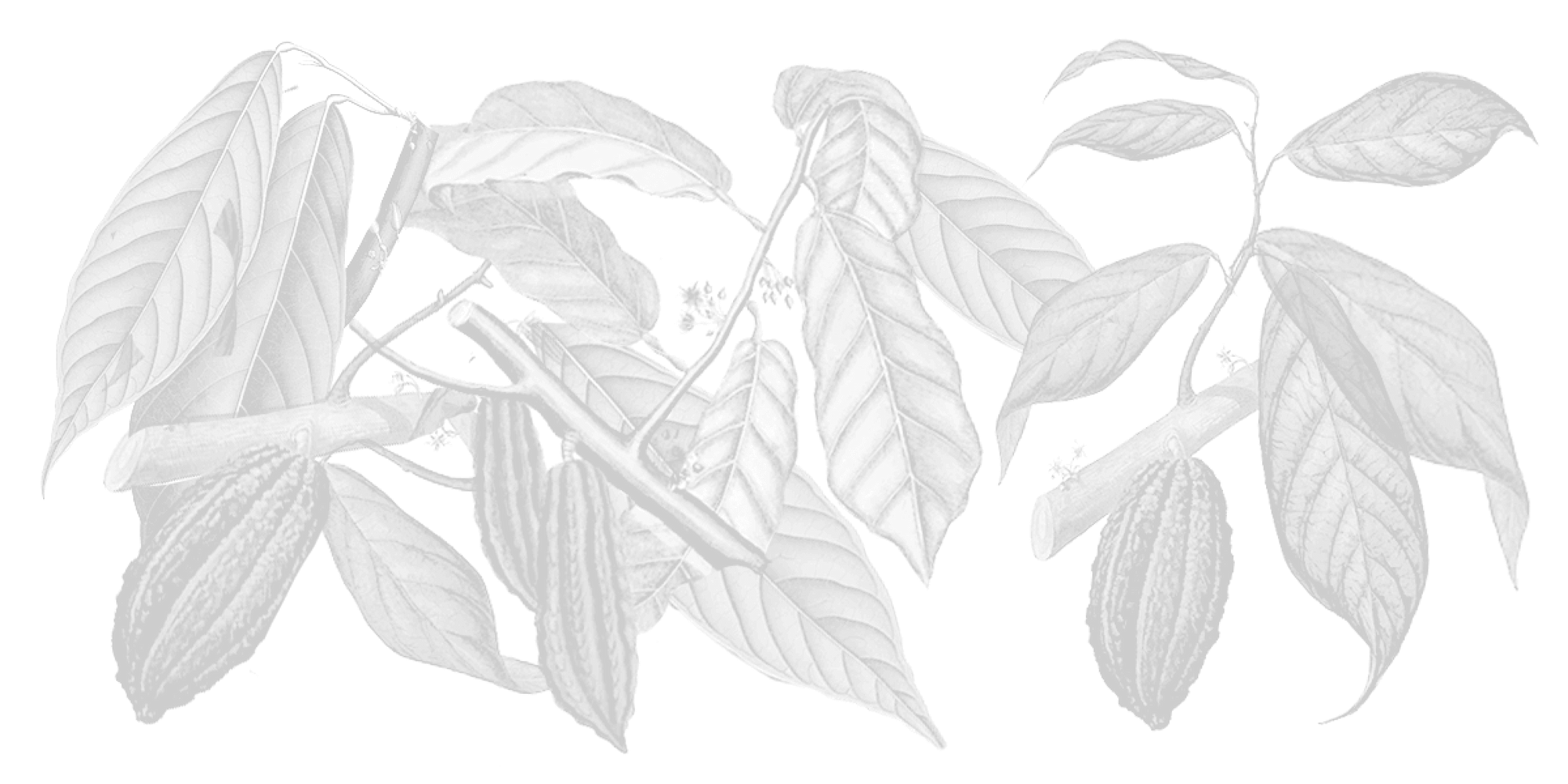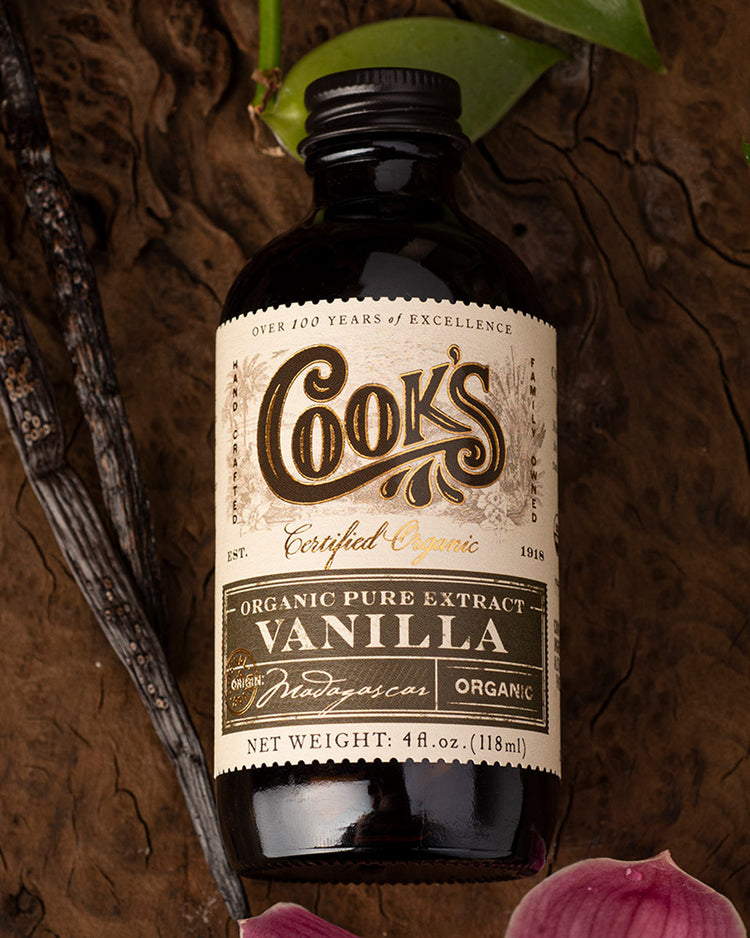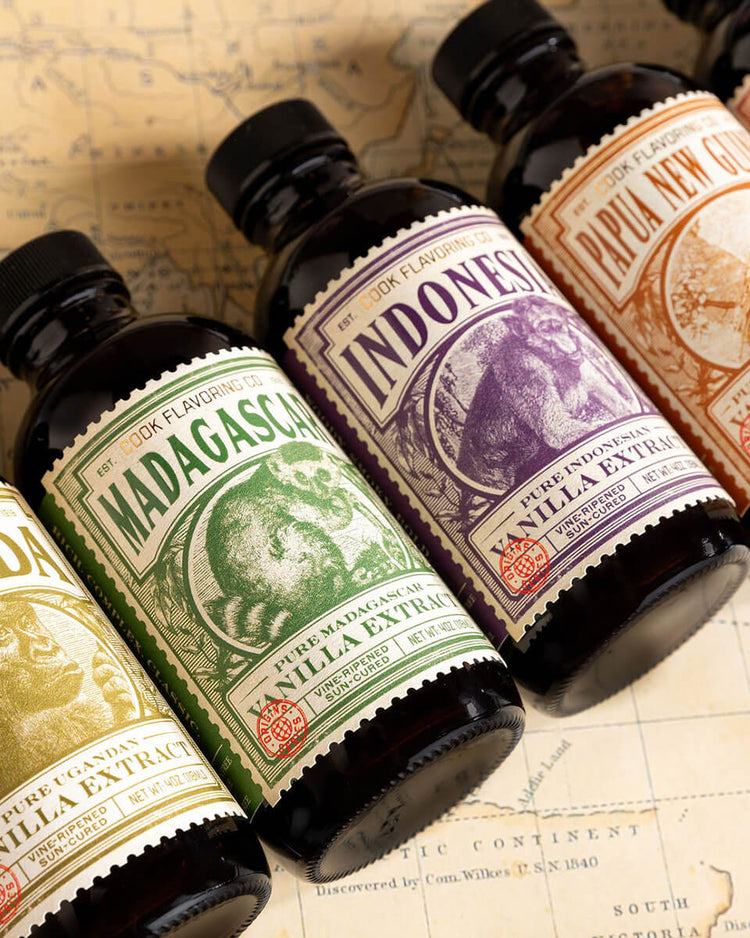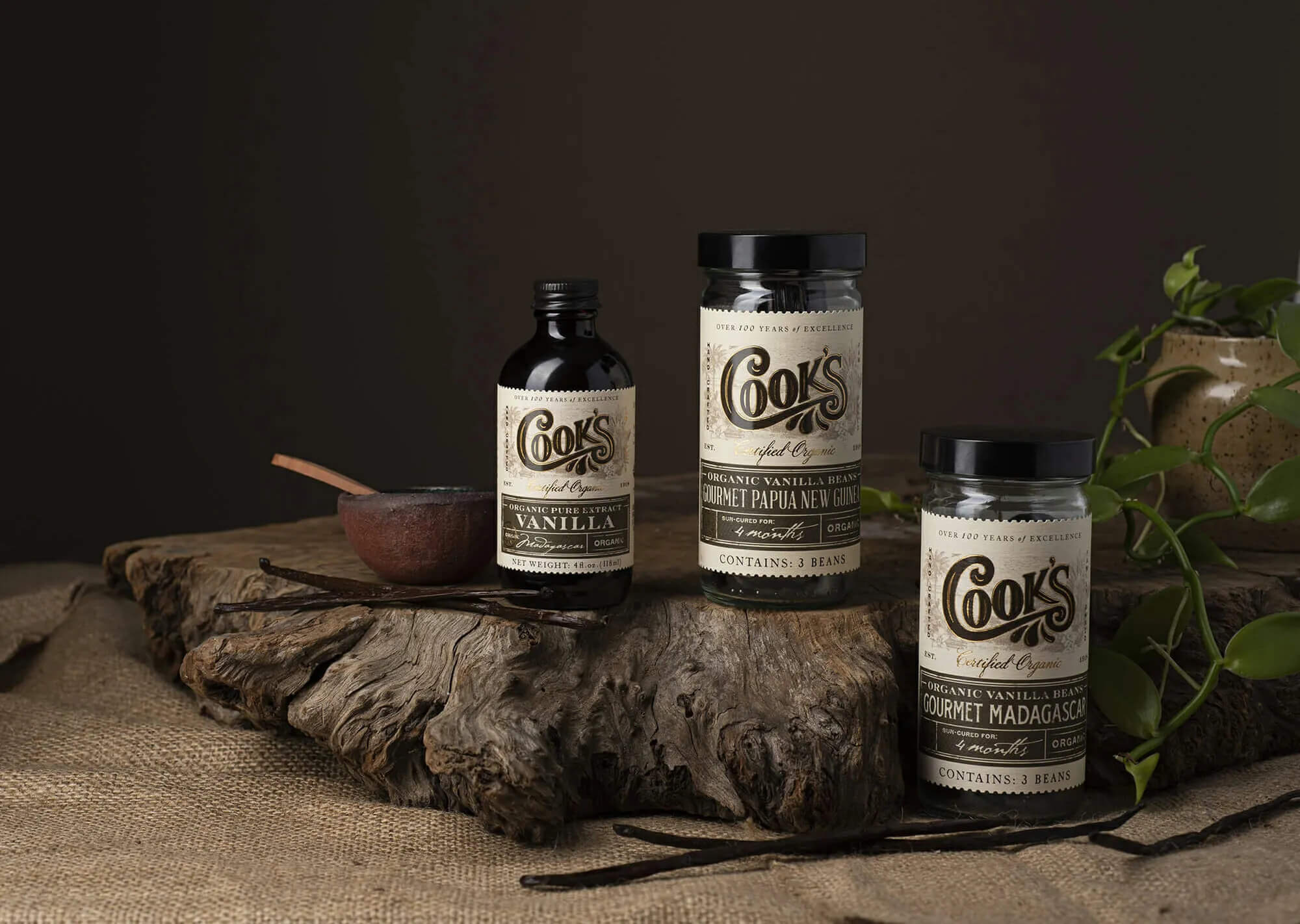We have just returned again from Madagascar, where we spent days tramping around in “the bush” of the Sava vanilla country, talking with farmers.
We are bringing back to you the first whiff of good news we’ve seen in more than two years.
Before we all get too excited, a strong word of caution: It is too early to tell you the vanilla bean market has peaked. We thought this market would crash last year, and were proven way wrong. Still, we have reason to believe that relief from today’s ridiculous prices may be on the way.
Cautious optimism is the byword.
As you know from our market reports last summer and fall, 2016 saw soaring vanilla prices that have taken vanilla beans to a record-smashing $425 a kilo and up, surpassing prices in the last vanilla market crisis of 2002.
From the moment the “green campaign” opened last spring, a buying frenzy consumed the green vanilla bean market. Prices rose so sharply that the dollar plunged against Madagascar’s currency, forcing the Central Bank to send truckloads of ariary to banks in Sambava.
Farmers were reaping huge returns, and held back a big portion of their crops -- so-called Vrac -- to take advantage of the high prices. Exporters went into panic mode, buying every vanilla bean in sight, including “cuts” that should be discarded. Many adopted quality-killing shortcuts such as “quick curing” that we find highly dubious. Extractors such as ourselves had to pay upfront for vanilla bean deliveries, fueling the frenzy by lending the capital to exporters to pay exorbitant prices for vanilla beans.
These forces threatened to ruin quality and created a market bubble that we believe is unsustainable. We’ve been waiting -- and waiting -- for it to pop. This time, from the subtle signs we witnessed on the ground, we found four reasons to believe that a market correction is developing: high on-farm inventories with pressure to sell, a healthy new crop, higher production outside Madagascar, and reduced demand. Let’s go through them.





STRONG FLOWERING
We are in a new crop season. We arrived during pollination, when farmers go out into their plots each morning to pollinate -- by hand -- each blossom for each bean on each vine, as it opens.
Madagascar has had a late flowering this fall (their spring), which usually portends a poor crop. Exporters are predicting another shortfall. But we saw heavy flowering and lots of beans developing on beautiful, healthy vines. The farmers we spoke to expected a good crop, barring a hurricane or other such disaster,
FARMERS HOLDING INVENTORY
Exporters are still demanding top prices. But where we were, out in the bush visiting personally with farmers in tiny villages of bamboo huts without electricity or plumbing, we saw the Vrac vanilla beans that the farmers held back from last year’s crop.
The vanilla beans are beautiful and aromatic, but not yet fully cured. Many were vacuum-packed, a practice that eventually will ruin the quality of partially cured vanilla beans by encouraging development of sour-smelling phenolic compounds. Vacuum-packing is banned by Madagascar’s government, but remains rampant.
Nearly all the farmers had these vanilla beans on hand.
While exporters back in Sambava say the market remains tight, out in the bush, farmers will need to sell those Vrac beans -- estimated at 40 percent of the crop -- that they withheld from the market last spring. The risk is that if farmers hold these vanilla beans too long without full curing, the vanilla beans are likely to develop phenolic compounds that will ruin them. This will put pressure on farmers to sell these vanilla beans sooner rather than later.
PRODUCTION UP IN OTHER REGIONS
Meanwhile, as we expected, high prices have encouraged vanilla production in tropical regions outside Madagascar, including vanilla’s native Mexico. Production is also increasing in Papua New Guinea, Indonesia, Uganda and elsewhere. These beans are starting to come on the market, and we are seeing early signs they are putting competitive pressure on Madagascar growers and exporters.
END-USER RESISTANCE
With our costs rising to roughly $360,000 for a single ton of vanilla beans, the price of vanilla extract has soared to unaffordable levels for many of our customers. While we have maintained our quality by sourcing our beans directly, high prices have led some to cut corners by buying cheaper, low-quality vanilla beans. Some vanillas, made with very poor vanilla beans, are “pure” in name only.
We have encouraged our customers who cannot absorb such shocking prices to switch to our high-quality vanillin blends, at least for now. A high-quality blend is better than low-quality pure vanilla. As this substitution spreads, overall global demand will weaken, putting pressure on bean prices. The euphemism for this in the industry is “demand destruction.”
We do not want to see the traditional Malagasy culture of pure vanilla destroyed. That would be a tragedy, not only for vanilla itself, one of the most miraculous gifts in the history of food, but for the Malagasy people, who grow and cure these singular pods with such painstaking hand labor and care that we in the West can scarcely fathom it.
That’s why we visit our farmers in Madagascar, to keep that tradition alive and to bring you, our customers, the very finest, hand-grown and hand-cured vanilla in the world, seeking out the very best vanilla beans directly from those who grow and cure them.
We visited two of our organic villages on this trip, where we bought new blackboards for their one-room schoolhouses. Don couldn’t resist adding soccer uniforms for the children. Working with our partners on the ground, this aid to the village that have committed to organic production helps ensure that the farmers follow the strict organic protocol and harvest their vanilla beans only when fully mature.
Thank you for your loyalty. We saw in our travels through the bush the subtle glimmers of the end of the crisis. That’s good news for you, for us, and for the exquisite culture of pure vanilla.
We are keeping a very close eye to the market, buying selectively, and will keep you informed all the way. Please call us with any questions. We’d love to talk with you.








Comments